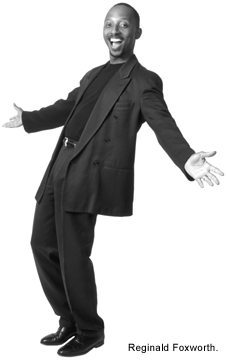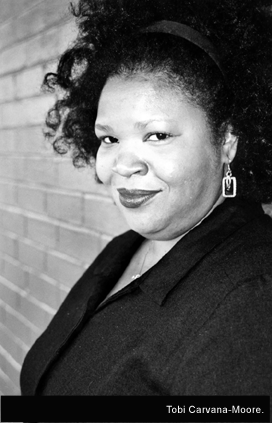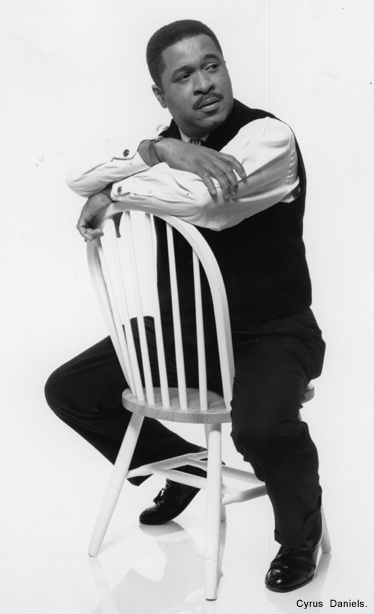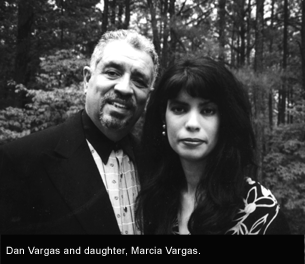
Fifteen years ago, McCool Communications’ Creative Director Joey Wofford was an Art Director with Burton Campbell. Wofford was working late one night pre paring comps for a new business pitch when one of his markers ran dry.
“Hey Fox,” he called to fellow Art Director Reginald Foxworth. “Throw me a flesh-colored marker.”
Sailing over the walls of the cubicles came a brown marker. The color of flesh. Foxworth’s, not Wofford’s.
It’s all in your perspective.
A few years later, Fallon McElligot Art Director, Tom Lichtenheld, speaking to the Creative Club of Atlanta, showed a campaign for Planned Parenthood targeted at African-American teenagers. One ad showed a young man in the winner’s circle of a track event with a headline reading, “Just wait and see how fast he runs when you tell him you’re pregnant.”
Heads nodded appreciatively in the audience. Except for one. The lone African-American woman in the crowd got stiffly to her feet and left, already planning the letter of outrage she would write that very night.
I was an officer with the Creative Club that year. I got the letter. I also got the mes sage: It’s about perspective. People who have it, people who don’t, and people who don’t have a clue.
Atlanta has somewhere in the neighborhood of 300 advertising agencies and at least another hundred design firms.
Quick. How many African-American creative people have you worked with in your career?
I have been writing here for 23 years and I have worked with only four. At least it’s easy to remember their names.
There have been other African-American creatives here, of course. Whether out of conviction or necessity, most have worked for minority-owned firms such as Burrell Communications, Matlock Adver tising and Public Relations, Visions/USA, and the similarly named Images/USA.
But here in the cradle of civil rights, in the heart of a city that is roughly 50% African-American, in a business that purports to value diversity, relatively few African-American creatives work for general market advertising agencies.
There are reasons for that. Just not very good ones.
Tobi Carvana-Moore is a Vice President and Creative Director at WestWayne/Atlanta. She is also a Managing Partner of Black Sheep, an organic marketing unit within WestWayne created to connect progressive marketers with today’s diverse consumer groups.

“BlackSheep is about culture, not color,” says Carvana-Moore. “We believe that all cultures —new, old, and emerging— deserve to be spoken to with sensitivity, insight, and respect.”
This is something I really preach about for advertising: Start looking at the world through other people’s eyes. And not just the eyes of the people next door.”—Tobi Carvana-Moore
The BlackSheep team developed a smart-as-paint strategic process (Infiltra tion, Interpretation, and Translation) that began with a deep dive into African-American cellular life and ended with a campaign of beautiful little novels about African-American life.
These were not the white scenarios with black faces we all know and ignore. The images in Black Sheep’s “My Life” campaign resonate with humanity—and touched a chord with consumers and the press alike.
Though Creative Director Luke Sullivan reviews most portfolios, Carvana-Moore says she sees few books from mi norities. She’s working with Clark Atlanta University (CAU) to develop an internship program at WestWayne that may change that.
“There’s a real problem with people knowing they can actually work in the in dustry. This is a tight community. There’s a need for training, for solicitation, and for placement,” she says. “More than that, there’s a need to be open to other people and how they see the world.”
Like the members of BlackSheep, Jenifer Cooper has spent her professional life in a career where she was usually the youngest, often the tallest, and always the blackest person in the room.
Cooper’s expertise is in higher education marketing, a niche that has become increasingly important as traditionally passive colleges and universities have had to compete for candidates.
Even given higher education’s more liberal bent, African-American faces on the director’s level were few and far between outside the historically black colleges and universities. So Cooper’s tenure as Di rec tor of Admissions for Agnes Scott College would have been noticeable even without the radically progressive marketing materials she shepherded, including one of the first interactive CD ROM presentations—hot stuff back in 1992.
After several years as Vice Presi dent/ New Business at Melia Design Group, where she managed accounts from Spel man College to Harley Davidson, Cooper founded CooperWorks to offer marketing and design that is long on insight and short on hype.
Insight is what’s missing from most work targeting African-Americans today, Cooper says. “If you look at African-Americans on paper and speak only to what you see there, you’ll get it wrong. Our culture is made up of many different experiences. To not recognize that there are many sides to us, as individuals and as a culture, will result in work that is one dimensional at best.”
The story of Cooper’s work for Spelman, the country’s preeminent black women’s college, is a vivid example of insight—in stinctive as well as acquired.
The college’s previous design firm did not believe a general market firm could understand Spelman, and they wrote to Spelman’s President and said as much. In stead of rejecting Melia out of hand, Dr. Johnnetta Cole planned to review the copy before anyone else. If it didn’t ring true, it would die on the spot.
Melia’s Spelman team was already ner vous; the challenge they faced was enormous. But no one knew about the extra pressure. Including myself. I was the very white, very middle-aged writer on the team, and knowing one of the world’s most eloquent speakers would scrutinize my work for any false step would have been too much.
But a painful evening with the author of that letter to the Creative Club had taught me something valuable about perspective: I didn’t have it in the African-American world. But I had a partner who did—Jenifer Cooper. And I knew how to listen and learn.
In the end, Dr. Cole blessed our work, students wrote letters about it, and I gained the interesting moniker of “the intense one who listens hard.”
Quincy Cherry understands. He’s a listener. When you’re a black man re search ing a piece of business on the feedlots of Lubbock, Texas, you don’t have any other choice.

The American Association of Advertising Agencies offers a Multicultural Advertising Intern Program (MAIP) and the 7th District American Advertising Federation (AAF) hopes to launch a Clark Atlanta Univer sity chapter in the near future. Dave Kelley heads that effort. “The more different kinds of people we can expose to our business, the better. We’re in the idea business. What works in our business is a wide range of experiences and thinking. Bring all that together and it fuels creativity.”
With his return to Atlanta just two years ago, Quincy Cherry’s career has come full circle. Sort of. Cherry is Senior Vice Presi dent and Creative Director of Matlock Adver ti sing and Public Relations, an independent African-American agency founded by Kent Matlock some 16 years ago.
Matlock is Cherry’s second African-American agency. His first was Burrell in Chicago. From the moment he walked in Burrell’s door, Cherry felt like he had come home. “It was the culture,” he says. “It wasn’t just about color —20% of the staff wasn’t of color. But people reached out to you and made you feel like you’d come home. It was an awakening.”
But it was his work at Sawyer Riley Compton that taught Cherry the listening skills that made him a powerful creative person and netted him two Clios.
“I talked to cowboys and veterinarians and a number of different people. I’d never known those people and I had to find out about them. But now to be able to talk to myself in advertising…
“I used to think advertising was talking to me. Then I realized that most of it really wasn’t. They were trying, but they were generalizing. They assumed they knew who I was and they didn’t. That was the beginning for me on how to create advertising for the African-American community.”
Cherry does not assume that he knows all African-Americans. Nor does he allow others to make that assumption. He in sists his staff get out in the world and do cultu ral research as often as necessary to know what’s real and relevant to their audiences.
“When I first worked on McDonald’s, I didn’t know that consumer. So I got my butt on the train in Chicago and rode to the south side and I hung out. It’s challen ging, I’m not gonna lie to you. But at the end of the day, when people write and tell you that what you’ve done in a commercial has changed their life, it’s worth it.”
Stanley Yorker has spent his whole career working for African-American agencies. Until Burrell’s Atlanta office shut down its creative function, Yorker was one of the agency’s creative directors, working on accounts such as Coke and PowerAde.
When French ad giant Publicis bought 49% of Burrell in 1999, Yorker and Partner Lamar Johnson knew it was time to build a business for themselves.
“I have nothing but positive things to say about Burrell,” says Yorker. “We just wan ted to do things in our own style. Their whole paradigm was modeled on agencies like Leo Burnett. We see ourselves as much looser.”
An understatement. One that the firm’s name —nomenudum—makes clear. The word means “a proposed taxonomic name that is invalid because the group it designates is not described or sufficiently illustrated for recognition.” Yorker and Johnson felt it was the perfect label for an agency that would specialize in reaching the label- less across cultural, racial, gender, and geographic divisions.
“It’s a mindset,” Yorker explains, echo ing Tobi Carvana-Moore, “that results in a completely different approach to advertising.”
Yorker’s review of advertising target ing African-Ameri cans is mixed. “Some get it right,” he says, “Like the Budweiser ‘Whassup’ campaign. But I think that’s because of who actually developed it.” (The campaign had its genesis in a short film by Director Charles Stone III that was discovered by DDB Worldwide.)
“But a lot of people still don’t get it. They think using a buzzword or the latest slang is enough. But work should be based on some sort of consumer insight. The cultural nuances that make you say, ‘how did they know that?’”
How many of Atlanta’s creative people are African-American, Hispanic, or Asian American? Sorry, but we don’t know. With the exception of two agencies out of the 70 we contacted, no one ack nowledged the question. And though a number of Atlanta designers are of Asian descent, if there’s an Asian adver tising agency here, we didn’t find it. Still, Atlanta is probably no worse than most cities outside of Chicago and New York in the diversity of its advertising population. But we sure don’t want to talk about it.
Austin Kelley gets high marks from both the African-American and His panic advertising communities. Partly for the way the agen cy reaches out to form minority part nerships and partly for the way it ‘feels’ to work with them.
Cyrus Daniels of Visions/USA has worked with Austin Kelley on accounts such as Church’s Fried Chicken, The Georgia Lottery and the Georgia anti-smoking cam paign. The nature of Visions’ role varies de pending on needs, but it ranges from de vel oping creative independently to providing a sort of cultural sound check.
“We’re a diverse agency in our makeup and backgrounds,” says Daniels. “So we can provide guidance and research to help craft targeted messages that are not offensive.”
Daniels remembers a Georgia company’s print ad a few years ago that was in tended to tout their diversity in supply chain relationships. The visual was a series of chains linked together. It’s easy to under stand why the image was considered. (Supply chain = chain.) It’s harder to under stand why no one saw the problem. (Chains = slavery.)
“Because of our business acumen, we’ve always attracted assignments that are not focused on the African-American market. But for those assignments which are, knowing what to do and what not to do is the kind of sensitivity we bring to the table,” Daniels explains.
Hispanic consultant Dan Vargas of Vargas & Amigos also works with Austin Kelley on the anti-smoking campaign. Vargas, whom Austin Kelley President Jeff Nixon calls the “patriarch” of Hispanic ad ver ti sing in Atlanta, “has lived the whole life—he began as an art director who happened to be His panic and has be come an articulate spokesperson for the community.”

The big news about Atlanta’s Hispanic advertising community is that there is one.
Until recently, when one spoke of Hispanic advertising here, only one name came to mind: Dan Vargas. When Vargas started work at Burke Dowling Adams, if he wanted to see a Hispanic face he had to look in the mirror. “I became the Statue of Liberty for Hispanics,” says Vargas. “I was a community leader not because I wanted to do that but because there was nobody else to do it.”
Today, Dan Vargas and his daughter, Marcia Vargas, provide multicultural reality checks to general market agencies. Money is almost always an issue.
The mainstream will expect you to achieve 100% with 10% of the budget. So you have to be smarter about the money. It all depends on who you want to reach. A Cuban target? Mexican? South American? Puerto Rican? Texican?
Vargas’ efforts have paved the way for smaller design boutiques such as Morgan Design Studio. Even though his heritage is Hispanic, Michael Morgan works more frequently with the African-American community than any other.
Atlanta’s newest Hispanic advertising agency, however, is one of Mexico’s most well known. Grupo Talents was founded 11 years ago in Mexico City as a full service commu ni cation and events management company. The agency has offices in Mexico City, Guadalajara, and Monterrey, California to handle clients such as Kraft, Coca-Cola, Jose Cuervo, Colgate, and War ner Lambert.
For Grupo’s CEO/USA, Arturo Adonay Somoza, opening an office in Atlanta is a mixed blessing. “I love my country,” he says. “I miss everything about it.”
Since Atlanta’s Hispanic community is relatively young compared to cities like Miami, most Hispanic demographic information is crude at best. “When it comes to the Latino market,” says Marketing Director Roel Lopez, “‘Spanish’ is as detailed as the demographic information gets. And there are as many different kinds of Latin music as there is American music.”
Grupo hasn’t done much partnering yet, but that will change. “We’re very busy with what we’re doing now. But in the future, we will be able to offer something remarkable to companies that need our help. Be cause we have so many alliances in Mexico, we have incredible resources to offer.”
Kembo Tom looks like the native of the Caribbean that he is and sounds like a brand manager straight out of Procter & Gamble. Assuming a P&G brand manager is urban, hip, and street-savvy. This is a powerful combination, my friends.
Tom is a guerilla. More specifically, he’s a member of Guerilla in the Midst (GTM), a strategic promotions and marketing company which uses non-traditional methods to reach a target audience. Or as they put it, “inject your brand into the environment of your target.”
One example. Say Adidas (a client) wants to in troduce a basketball shoe de signed for playing on concrete. GTM’s guerillas would find out where the street players meet and cover abandoned buildings nearby with posters. Or put T-shirts on the players. Or stencil messages on the court itself. With legal permits, of course.
Dan Vargas introduced GTM to Austin Kelley as a vital street-level part of that agency’s work for Truth, another anti-smoking entity. “They serve a huge need for those of us who have lots of retail business but don’t spend much time working at the street level. What they’ve done for Truth is amazing,” said Jeff Nixon.
“We’re on the front lines,” says Tom. “We’ve built an extensive street network of trendsetters, music industry marketers and tastemakers in cities all over the country. We help corporate brands break through to the subculture, without losing their brand message in the translation. We’re the brand’s guardian. We just do it on a peer to peer level.”
Like Mao Tse Tung said, “The guerilla swims in the sea of the people.”
If you want to see the face of advertising’s future, visit the Portfolio Center. Or the Creative Circus. Or Virginia Common wealth University. These schools have student pop ulations that make the Rainbow Coalition seem monochromatic.
For over eight years, the Portfolio Cen ter has made minority outreach a priority. In fact, when DDB Worldwide first looked in to establishing a scholarship program, Port folio Center President and Founder Gemma Gatti backed the idea to the hilt, matching DDB’s contribution dollar for dollar.
The Creative Circus outreach program is much younger, but just as passionate. (The Circus’ Carol Vick has been taking recruiters to Clark Atlanta for some time.) Both schools live the reality, not the idea, of diversity as a creative engine.
“We will all be better, stronger agencies if we reflect the population,” says Deanne McLean, SVP/Director of Creative Recruit ment at DDB Worldwide, Chicago. “People who come from these diverse cultures are revered. They have an interesting point of view that enriches the creative product.”
McLean has been a key driver of DDB’s program, now known as the Bill Bernbach Multi cultural Scholar ship. Each year, DDB awards scholarships to students from four schools, including Portfolio Center and the Creative Circus.
A significant part of the battle, however, is to make African-American families aware that advertising is a viable career path.
Toward that end, The One Club has formed a partnership with Clark Atlanta University to introduce students to the industry and all it offers. These and other efforts, said Professor Christopher Hickey, have resulted in CAU’s new concentration in advertising, possibly the nation’s first at a historically black college.
So things are changing. There is action. And it is very likely that advertising’s next generation will bear little resemblance to the Old White Men of Madison Avenue.
“We’re all fighting for identity,” says Dan Vargas. “But we are also fighting to be one. To be unified. We are a coat of many colors.”